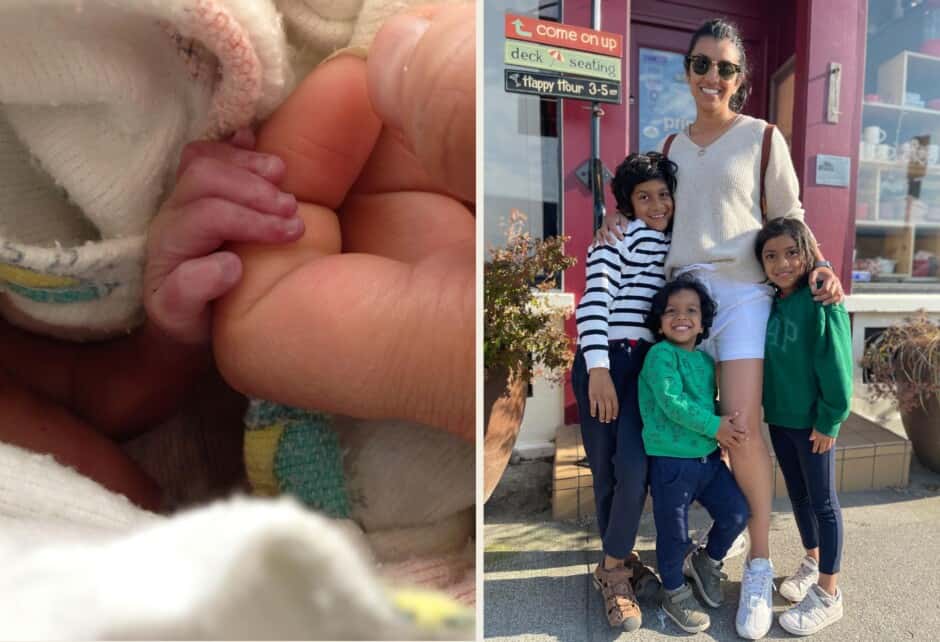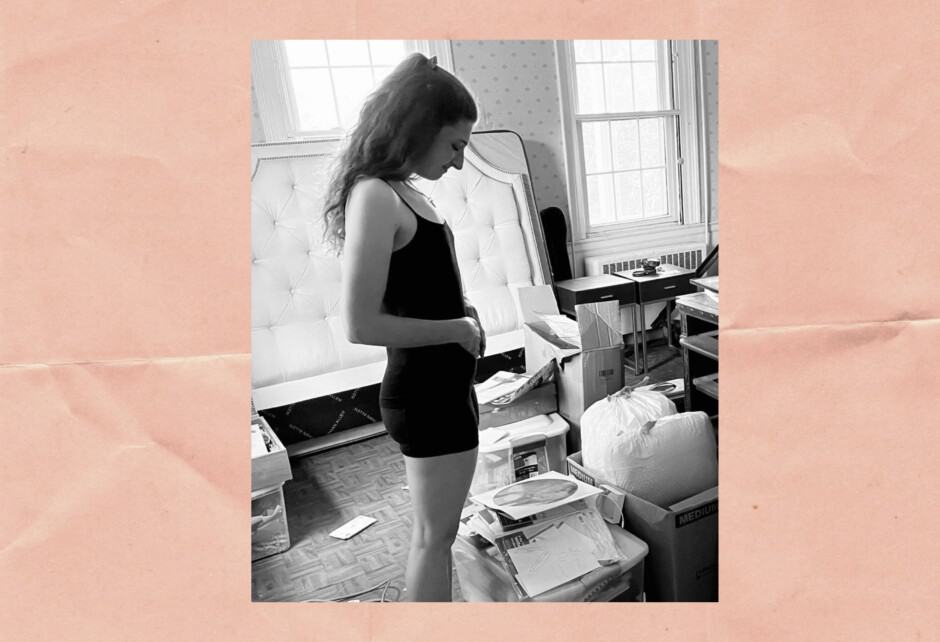
What My Cancer Recovery Taught Me About Letting Go of Covid Fears
Written by Laura Maestrelli
Photography by Laura Maestrelli
After living for over a year with the constant threat of Covid looming over us, the newly vaccinated face a new challenge: how does one re-enter into the world carefully and without being paralyzed by anxiety? Bay Area-based mother Laura Maestrelli knows this trepidation all too well. In today’s “Mom Talk” column, the mama of two—who most recently worked for a non-profit focused on literacy and girls’ education in the developing world—shares her personal experience of what her recovery from cancer taught her about letting go of Covid fears.
As I sat in my oncologist’s office, weakened and bloated after completing a grueling 4-month chemo regimen, I said to her through tears, “I don’t know how to let go of the fear. It’s been my constant companion through all of this.” I had found a lump in my right breast nine months earlier at the age of 39. Within the span of two months, I had gone from nursing my baby daughter to recovering from a double mastectomy. My kind oncologist had seen me cry in her office many times before, but this time her response was different. “Laura,” she said with the perfect balance of sympathy and maternal wisdom that I had come to rely on. “You’re going to have to start putting this disease in your rearview mirror.”
That was over four years ago. In the time since that conversation, my hair has grown back, my scars have lightened, my children have grown from sweet babies into thriving kids, my sister has gotten married and had a baby, and the world has confronted the worst pandemic in a century. I’ve been thinking a lot lately about my transition out of cancer treatment and back to “normal” life. So many of the challenges I experienced in that awkward adolescence between fighting for my life and getting on with things seem relevant now as we start to look toward the new normal of a post-vaccination Covid world.
My therapist would describe it in terms of brain function. For many of us, this last year has kept our amygdalas—the “fight or flight” part of our brains—revved up at unsustainable RPMs. Seemingly out of nowhere, this terrifying, invisible virus arrived and turned everything upside down. People were saying good-bye to dying loved ones over FaceTime. The stock market was crashing. Morgues were being set up in Central Park. Unemployment was at an all-time high. Grandparents feared they’d never see their grandchildren again. Even the most mundane tasks of our day-to-day lives reminded us of the lurking virus as we donned our masks and carried disinfectant wipes and stood in distanced lines outside grocery stores hoping to find toilet paper inside. It felt like the life we had known before was gone and never coming back.
Cancer for me was that experience on a micro, individual scale. Instead of worrying about airborne pathogens, I spent nights lying wide awake doing a mental scan of my body for any signs of aches or pains that might indicate that my localized cancer had spread. As much as my breast surgeon and oncologist tried to reassure me that my cancer, though serious, was highly treatable—as often as they reminded me that I had chosen the most aggressive treatment option at every decision point—I still believed I was going to die. There was no amount of rational explanation—no graph or survival percentage—that could make that belief go away. We are not meant to live in a constant state of fight or flight, but that’s what those nine months were for me. It was exhausting.
I hoped that once I finished my treatment, somehow everything would just be ok again. I was beaten down, physically and emotionally, and I needed to believe that things would quickly get better after I finished chemo. I counted down the days to my final infusion day like it was every Christmas morning of my childhood. But it turned out I was chasing a mirage. Cancer survivors will tell you that the first year after treatment—when you are cast back into the living world, and your friends and family stop talking about cancer in the present tense—is hard in an unexpected and uniquely lonely kind of way. You are left with a body that has betrayed you and the physical and emotional scars of dealing with that betrayal. But the rest of the world has moved on.
And so when my oncologist told me at my first post-treatment appointment that I needed to start putting cancer in my rearview mirror, she could have just as easily been telling me to pilot the next SpaceX mission to the International Space Station. How I could I possibly put this disease behind me when she knew better than anyone that cancer sometimes comes roaring back? How would I ever stop believing that every random pain I felt required a CT scan to rule out metastasis? How would I ever be able to look at my young children and not wonder what their life would be like without a mother? It seemed totally unfathomable to me. Fear had wrapped its fingers around me so tightly for so long that I just couldn’t imagine ever escaping its grasp.
I suspect that feeling—or some version of it—is one that many people are experiencing now. Vaccinations have finally arrived, and with them the accompanying relief and gratitude. But once the euphoria of getting that second shot subsides—the gnawing question of What now? lingers. How do we go about doing the normal stuff of life again? How do we trust that the vaccine will protect us? What about our unvaccinated children? How do we keep them safe? How do we know that these variants will not mutate into vaccine-resistant strains? What happens if we have to shut everything down again? How will we know how to be together again after being apart for so long? It’s just one long list of questions without answers.
I certainly don’t have the answers to those questions. But what I do know and what I can share are the things that helped me ease back into life after cancer and put the fear behind me…
Be kind to yourself. Don’t get frustrated that you aren’t ready to leap back to your 2019 self. That person may never come back, and that’s ok.
Practice mindfulness. I started doing yoga after cancer, and it helped my body feel strong while giving me space to breathe slowly and heal gently.
Find a therapist. I didn’t start therapy until I was almost done with chemo, but within minutes of talking to my therapist I wished I’d found her years earlier. We spent every week untangling my lingering anxiety about my disease and working on strategies to live with it. If your anxiety feels really crippling, talk to your doctor about an anti-anxiety medication. I started on a low dose of Lexapro around the same time I started therapy, and together they improved my quality of life in remarkable ways.
Get out in nature. Trees and sunshine are powerful mood-altering drugs that require no prescription.
Move. Walk, swim, bike, dance, whatever you like to do, but get those endorphins flowing.
Hug your vaccinated friends. Even if it feels a little weird after all this time apart.
Start doing the normal stuff of life again in small ways. Try eating at an outdoor restaurant or taking an Uber. Sit on a park bench without your mask on.
And most of all, try to focus on each day, one day at a time. 2020 taught all of us that we don’t know what’s coming down the pipe. Life can be utterly normal one day and a bad Hollywood disaster movie the next. Cancer survivors already knew that—it was kind of like our secret handshake—but now we share that knowledge with the world. It can be terrifying, but when harnessed the right way, it can infuse the most mundane moments with meaning—and bring joy in the most unexpected places.
Are you a mother with something to say? Send us an email to be considered for our “Mom Talk” column.
Write a Comment
Share this story




Incredible points. Great arguments. Keep up the good
effort.